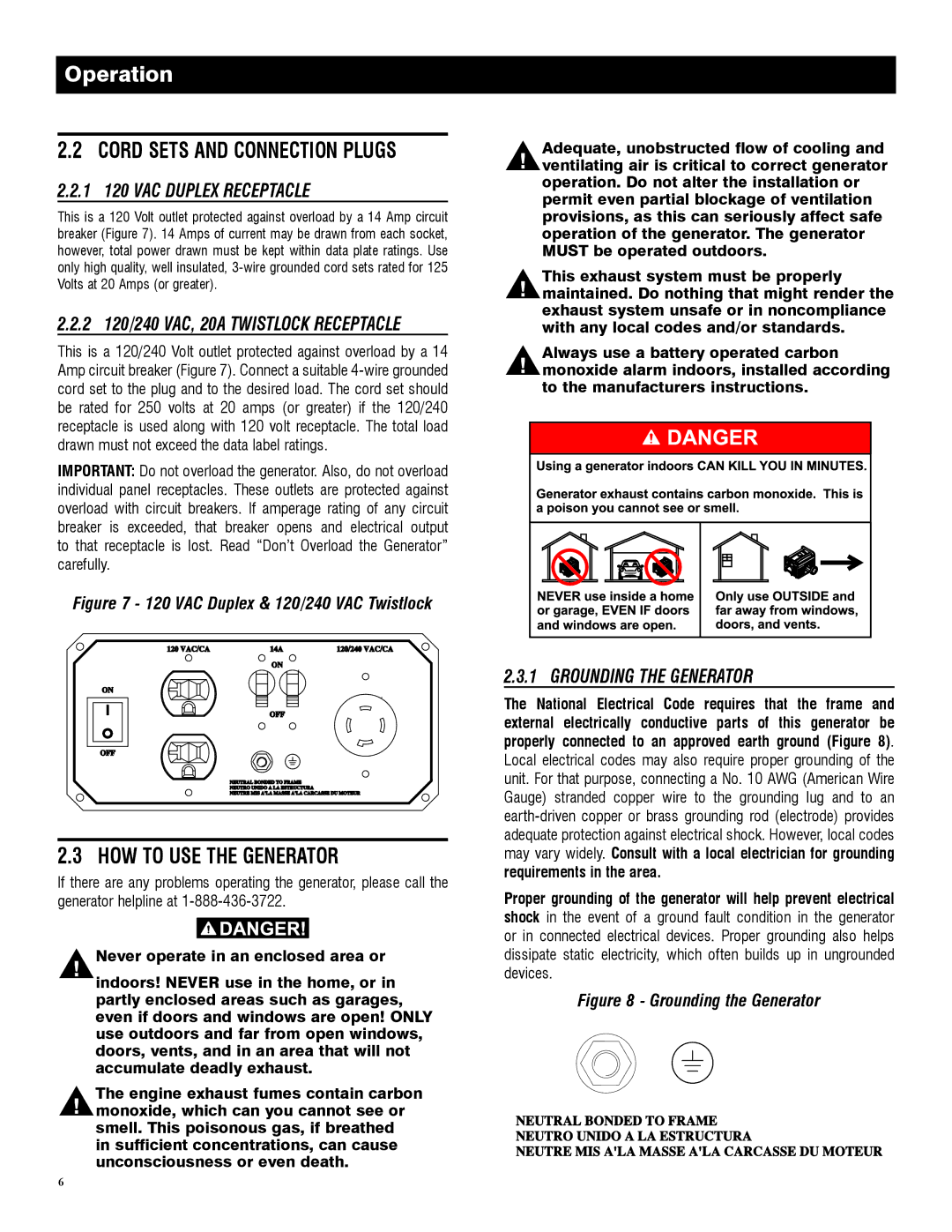
Operation
2.2 CORD SETS AND CONNECTION PLUGS
2.2.1 120 VAC DUPLEX RECEPTACLE
This is a 120 Volt outlet protected against overload by a 14 Amp circuit breaker (Figure 7). 14 Amps of current may be drawn from each socket, however, total power drawn must be kept within data plate ratings. Use only high quality, well insulated,
2.2.2 120/240 VAC, 20A TWISTLOCK RECEPTACLE
This is a 120/240 Volt outlet protected against overload by a 14 Amp circuit breaker (Figure 7). Connect a suitable
IMPORTANT: Do not overload the generator. Also, do not overload individual panel receptacles. These outlets are protected against overload with circuit breakers. If amperage rating of any circuit breaker is exceeded, that breaker opens and electrical output to that receptacle is lost. Read “Don’t Overload the Generator” carefully.
Figure 7 - 120 VAC Duplex & 120/240 VAC Twistlock
nAdequate, unobstructed flow of cooling and ventilating air is critical to correct generator operation. Do not alter the installation or permit even partial blockage of ventilation provisions, as this can seriously affect safe operation of the generator. The generator MUST be operated outdoors.
nThis exhaust system must be properly maintained. Do nothing that might render the exhaust system unsafe or in noncompliance with any local codes and/or standards.
nAlways use a battery operated carbon monoxide alarm indoors, installed according to the manufacturers instructions.
2.3 HOW TO USE THE GENERATOR
If there are any problems operating the generator, please call the generator helpline at
nNever operate in an enclosed area or
indoors! NEVER use in the home, or in partly enclosed areas such as garages, even if doors and windows are open! ONLY use outdoors and far from open windows, doors, vents, and in an area that will not accumulate deadly exhaust.
nThe engine exhaust fumes contain carbon monoxide, which can you cannot see or smell. This poisonous gas, if breathed in sufficient concentrations, can cause unconsciousness or even death.
2.3.1 GROUNDING THE GENERATOR
The National Electrical Code requires that the frame and external electrically conductive parts of this generator be properly connected to an approved earth ground (Figure 8).
Local electrical codes may also require proper grounding of the unit. For that purpose, connecting a No. 10 AWG (American Wire Gauge) stranded copper wire to the grounding lug and to an
Proper grounding of the generator will help prevent electrical shock in the event of a ground fault condition in the generator or in connected electrical devices. Proper grounding also helps dissipate static electricity, which often builds up in ungrounded devices.
Figure 8 - Grounding the Generator
6
